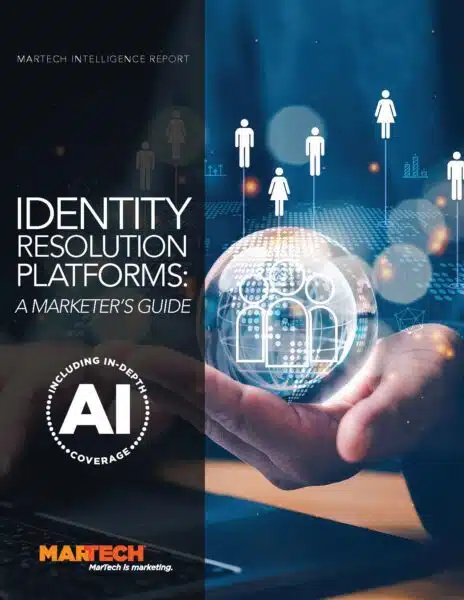How AI is making identity resolution platforms more effective
Customer demand for personalized marketing keeps rising and third-party cookies keep deprecating, AI helps IDPs fill in the gaps.
Consumer expectations for highly personalized marketing interactions have reached an all-time high. Eighty percent say the experience a company provides is as important as its products and services, 73% expect better personalization as technology advances and 65% expect companies to adapt to their changing needs and preferences, according to Salesforce’s “State of the Connected Customer” report.
Marketers are very aware of this: 90% say personalization significantly contributes to business profitability, according to Think with Google research. This makes sense given that consumers say they spend an average of 21% more when brands personalize their experiences, a Twilio survey finds.
However, consumers use a wide array of devices and online/offline touchpoints now, leaving marketers trying to understand which online devices and offline behaviors belong to a consumer, as well as who that consumer is. Meanwhile, third-party data is set to go extinct as tech companies and regulations limit its availability.
Dig deeper: Alternatives to third-party cookies: The state of play
As a result, identity resolution is critical to marketing success and essential for compliance with data privacy laws. Each time a consumer interacts with the brand – regardless of channel – identity resolution systems attribute a different identifier to that individual. These identifiers can include an email and an IP or physical address, as well as a mobile phone number, digital tag or cookie. The identifiers are then “stitched together” and attached to a universal or proprietary ID.
AI rides to the rescue
Identity resolution platforms manage the process and maintain databases (aka identity graphs) of persistent individual and/or household profiles based on multiple first-, second- and third-party data sources. These platforms have become important tools for brand marketers implementing people-based marketing strategies, especially in the age of AI since these technologies rely on a solid data foundation to deliver insights and generate content.

Identity resolution is not only critical to marketing success but is essential for compliance with consumer privacy laws such as CCPA and GDPR. Explore the platforms essential to identity resolution in the latest edition of this MarTech Intelligence Report.
Though the impact of artificial intelligence and machine learning isn’t as visible in identity resolution platforms as in other martech tools, these revolutionary technologies are playing an important role behind the scenes.
One way AI and ML are augmenting the functionality of identity resolution platforms is by improving the accuracy of identifying and matching customer data across various sources.
For example, machine learning algorithms are used to analyze large datasets and identify patterns, improving matching when data isn’t exactly the same on different platforms — such as Michael Smith vs. Mike Smith. These technologies are also useful for automatically cleaning and standardizing data, as well as correcting errors and finding anomalies. Predictive modeling can forecast future behavior based on historical data, enabling systems to predict the likelihood of different data points belonging to the same individual.
Structuring the data
Additionally, ML algorithms can be employed to process unstructured data — such as social media posts, emails, etc. — and turn it into structured data that can be used for identity resolution. Meanwhile, natural language processing (NLP) enables the analysis of textual data and the extraction of meaningful information.
Prospective advancements in generative AI methodologies, such as generative adversarial networks (GANs), may serve to enhance data sets that are incomplete or lacking density. Within a GAN, one element utilizes existing data to fabricate supplementary data for a profile, aiming to make it indiscernible from authentic data. A secondary element assesses the probable precision of the fabricated data. Given this configuration, each element gains knowledge from the other, theoretically enhancing its potency and precision in prognostications over time.
These technological advancements have other effects that are less immediate but equally important. These effects include faster data processing, which allows marketers to respond to changes almost instantly. Moreover, generative AI systems use the unified customer profiles created by identity resolution platforms to create personalized messages. This usage enhances the value of identity resolution for marketers.
Explore the platforms essential to identity resolution in the latest edition of this MarTech Intelligence Report. Click here to download!
Related stories